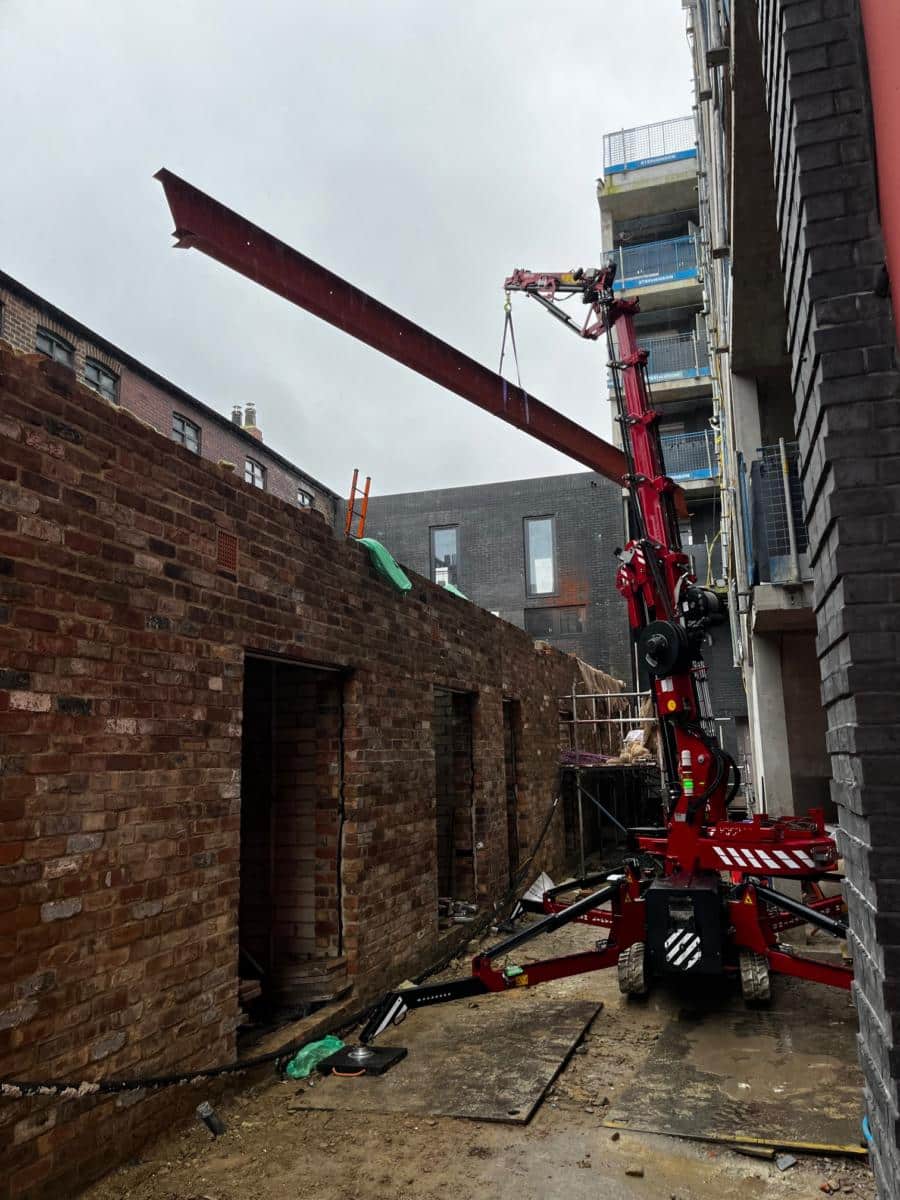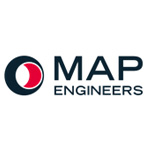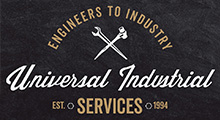
Steel Experts Since 1994
When your project relies on strong, precise, and durable steel connections, cutting corners isn’t an option.
You need a welding partner who brings proven expertise, strict adherence to safety standards, and a commitment to quality that ensures every join holds up under stress, weather, and time.
Here’s at UIS, we offer customised welding solutions that adapt to the unique demands of your project—whether it’s complex structural beams, high-stress load-bearing supports, or precise, detailed work that leaves no room for error.
Contact us today for a quote today.
Get a Quote
Contact us below to get a quote for your next project.
A Full-Service Approach That Saves Time and Reduces Risk
Our comprehensive services streamline every stage of your project, from initial planning and material selection to final inspections.
By offering a full-service approach, we handle the entire welding process seamlessly, which means fewer hand-offs, less downtime, and greater efficiency.
Our team’s expertise allows us to foresee and address potential issues early, minimising delays and keeping your project on schedule.

Our Capabilities
We cover all aspects of design, detail, manufacture, fabrication and installation.
Think welding’s just about sticking metal together? Well, let’s just say our welds are stronger than your morning coffee—and last a whole lot longer too!
Find the Right Welding Expertise for Precision and Durability
Managing a project that requires steelwork means each join defines the structure’s strength, durability, and safety. Skilled welders create bonds that withstand intense stress, temperature changes, and exposure to harsh conditions. Precision joins are essential, especially in applications like high-rise beams, bridgework, or complex machinery, where alignment and structural cohesion must meet high standards.
Example: Structural Alignment – For example, aligning structural beams for multi-story buildings demands exact precision; even slight deviations can lead to structural issues that worsen over time. A team experienced in this work will use laser-guided tools or digital calipers to ensure every join meets exacting standards, building a structure that remains stable under heavy loads. Choosing professionals who focus on alignment and bond strength can prevent future instability and costly retrofitting.
Partnering with skilled welders gives you confidence in the stability and longevity of every structure.
Invest in Skilled Welding for Long-Term Savings
Experienced project managers know what can happen when shortcuts are taken to cut initial costs—often leading to escalating repair expenses later. High-quality joins prevent cracks and material fatigue, which could compromise safety and increase repair needs.
Example: Load-Bearing Joints – Poor joins on load-bearing metal lead to structural deformation over time. Even minor flaws, such as inconsistent heat distribution, cause “weld cracking,” where small fissures grow under load, especially in high-stress areas like industrial scaffolding or heavy machinery supports.
Adaptation to Metal Types – Top welding services adapt their approach to the specific metal type being joined. Different types of steel respond uniquely; stainless steel, for instance, requires precise temperature control to avoid “sugaring,” a defect that weakens the joint from within. Professionals who understand the material’s behavior deliver a product that reduces long-term repair needs and ensures your original investment supports the structure for its full lifespan.
Investing in skilled welding protects against costly repairs, creating durable connections built to endure.
Custom Solutions for Complex Projects
Every project has unique requirements, with welding needs that vary based on environment, metal type, and structural demands. For challenging configurations—like high angles, difficult access points, or custom shapes—welders skilled in specialized fabrication techniques are invaluable.
- Custom Jig Fixtures – For instance, custom jig fixtures may be created on-site to secure parts that need precise alignment before welding. These fixtures hold pieces steady, particularly on structural components that will endure heavy stress or outdoor exposure.
Adapting Techniques for Environment – An expert knows how to modify techniques based on heat requirements and environmental constraints. For example, welding at height requires understanding how wind, weather, and temperature fluctuations impact weld quality. Professionals working in these conditions often use mobile shielding to control the welding environment and specialized safety gear to maintain stability and precision. These adaptable solutions ensure that every join meets quality standards even in the most challenging conditions.
Custom techniques for complex environments guarantee strong and reliable joins, regardless of the project demands.
Safety
For large-scale projects, meeting regulatory safety standards is essential.
Material Safety Measures – Safety compliance also extends to material choices and methods. Certain welding techniques produce hazardous fumes, especially when using alloys. Professional welders use advanced ventilation systems or fume extraction hoods in enclosed spaces, ensuring the weld is sound and that the worksite maintains safe air quality. Experienced teams take proactive measures in every detail, from equipment setup to post-weld inspections, so every join holds up to rigorous safety requirements.
What are the UK standards to consider?
BS EN ISO 9606-1 for welding qualifications and BS EN 1090 for steel structures. These standards ensure each joint maintains quality and safety in real-world applications.
Flexible Services for Evolving Project Needs
Project requirements often shift—perhaps a new support beam is needed, or a custom joint requires on-site assessment. Flexible teams bring portable equipment, rapid response expertise, and collaborate effectively with engineers to integrate changes seamlessly. Instead of pausing the project for adjustments, a well-prepared team moves from setup to execution without delay, staying responsive to evolving needs while maintaining high standards.
Example: Tack Welding for Temporary Holds – If you’re working on an assembly line with variable load requirements, adaptable welders might use tack welding to temporarily hold parts while adjustments are made, then finalize the joint once configurations are confirmed. This technique offers flexibility in assembly, allowing last-minute changes without affecting quality.
A flexible team ensures adaptability, keeping your project on track, even as demands shift.
Efficient Processes for Swift Completion
Balancing speed with precision is essential when deadlines are tight. Highly organized welders plan each phase meticulously, often using advanced tools like CAD-integrated systems to pre-program weld paths. This technology lets professionals execute tasks efficiently, minimizing setup time and enhancing accuracy through robotic assistance in repetitive tasks. These pre-programmed systems are especially valuable for large structures requiring hundreds of identical joins, such as stadium construction or high-rise frameworks.
Example: Multi-Pass Welding for Thick Steel – Experienced welders understand timing demands and use multi-pass welding methods for thicker steel components, where each layer is welded in quick succession, allowing the piece to cool slightly between passes while maintaining overall speed. This method ensures efficient work without compromising strength or durability, keeping projects on schedule and reducing structural distortion from uneven cooling. Efficiency here means using the right tools and methods to meet quality and timeline requirements.
Efficient welding processes move projects toward swift, safe completion, without sacrificing quality.
Improve Project Longevity with Quality Welding
High-quality joins provide long-term durability for your project. Each bond acts as a crucial joint within the structure, and when executed with care, it adds resilience to the entire framework, helping it withstand wear, load, and environmental exposure. Welders skilled in “post-weld heat treatment” (PWHT) techniques further enhance longevity by reducing residual stress within each bond, especially valuable for structures exposed to thermal cycling, such as bridges or industrial frameworks.
PWHT Technique for Enhanced Durability – PWHT involves heating the welded area to specific temperatures, reducing internal stress that could otherwise lead to cracking over time. For structures expected to endure heavy loads or cyclic forces, these heat treatments ensure the steel remains intact for years. A team familiar with techniques like PWHT delivers structural integrity and extended lifespan, ultimately protecting your investment over the long term.
By investing in quality welding, you secure project longevity and lasting structural integrity.


























